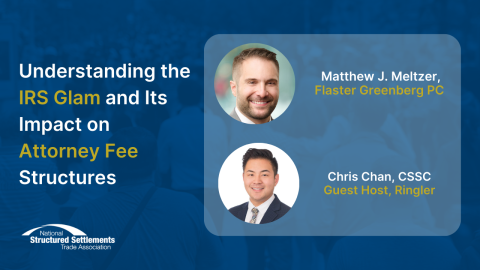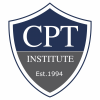
The latest "Settle Smart" podcast episode delves into the IRS Generic Legal Advice Memorandum (GLAM) issued on December 9th, 2022, and its implications for attorney fee structures in the structured settlements industry.
Meet the Expert: Our special guest, Matthew Meltzer, is a seasoned business corporate tax law attorney with Flaster Greenberg PC, a reputable commercial business law firm with multiple offices across the nation. Matt's extensive experience advising on transactional tax matters, particularly in the income tax treatment of structured litigation settlements, qualified settlement funds, and attorney fee arrangements, makes him the ideal expert to guide us through this complex issue.
GLAM: Shaking the Industry: The GLAM issued by the IRS sent shockwaves through the structured settlements industry. It raised concerns and questions about the payment of legal fees to third parties, casting doubt on the validity of standard fee structures. Matthew Meltzer assures us that the initial panic was not unwarranted. However, the GLAM's scope appears limited upon closer examination, primarily concerning non-traditional fee structures.
Standard Fee Structures Explained: To better understand the context, it's essential to grasp the concept of standard attorney fee structures. In a standard fee structure, attorneys agree to defer receiving their contingency fees until after the settlement agreement is finalized. These fees are then paid out in a series of periodic payments over time, providing attorneys with a more stable income stream.
Advantages of Standard Fee Structures: Attorneys opt for standard fee structures to manage cash flow effectively. By spreading out the receipt of fees over several years, they can avoid sudden spikes in their tax liabilities. This is particularly important for plaintiff attorneys who may experience irregular income due to the nature of their work.
The GLAM's Impact: The burning question is, how significant is the GLAM's impact on structured settlements and attorney fee structures? According to Matt Meltzer, the GLAM should be fine for those adhering to traditional fee structures. Childs vs. Commissioner, a landmark tax court decision, remains a reliable precedent that validates these structures. The GLAM's scope is narrower and, as such, should not affect standard fee arrangements.
A What-If Scenario: If the GLAM's recommendations were to become IRS policy affecting all fee structures, including traditional ones, the impact could be prospective rather than retroactive. However, this remains speculative, and the specifics would depend on various factors, including the statute of limitations.
Understanding the IRS GLAM and its implications for attorney fee structures is crucial in the structured settlements industry. However, staying informed and consulting with experts is always wise when navigating complex legal matters.
Watch the full interview below:
About our guest host, Chris Chan:
Chris Chan has been a Structured Settlement Consultant with Ringler since 2014. Chris specializes in Workers Compensation, Attorney Fees, Medicare Compliance, Trust Solutions, and Personal Injury. Learn more about Chris by clicking here: Chris Chan, Ringler





















